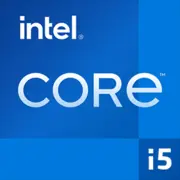Intel Core i5-2467M

Intel Core i5-2467M: 基本作業向けのウルトラモバイルプロセッサのレビュー
2025年4月
はじめに
Intel Core i5-2467Mは、2010年代初頭のウルトラブック時代に登場したプロセッサで、性能とエネルギー効率のバランスを考慮して設計されています。古いモデルではありますが、このCPUを搭載したデバイスは、依然として市場に存在し、予算向けのソリューションとしても販売されています(未知のブランドからの新しいモデルは250ドルから400ドル)。2025年において誰に適しているのか、また誰がより現代的な代替品を選ぶべきかを考察します。
アーキテクチャとプロセス技術
Sandy Bridge: 基礎知識
このプロセッサは、2011年にSandy Bridgeアーキテクチャ(32nm)で発表されました:
- 2コア / 4スレッド(ハイパースレッディングによる)。
- ベース周波数: 1.6GHz、ターボブースト: 最大2.3GHz(1コア時)。
- キャッシュ: 3MB L3キャッシュ。
- 内蔵グラフィックス: Intel HD Graphics 3000(12 EU、350–1150MHz)。
アーキテクチャの特長
- AVXのサポート — メディアタスクの計算を加速。
- DDR3-1333の統合メモリコントローラー。
- 前世代に対して10–15%向上したIPC(クロックあたりの命令数)。
iGPU HD Graphics 3000はHD動画やMinecraft(2011年)のようなシンプルなゲームには対応できますが、現代のプロジェクトには適していません。
消費電力とTDP
- TDP: 17W — 当時のウルトラブックとしては典型的。
- 実際の消費電力: 負荷時には最大20W。
比較すると:
- 現代のIntel Uシリーズ(2025年)は、4~6コアで9~15WのTDPを持っています。
- 2011年の競合: AMD A6-4455M(17W、2コア)は弱い最適化からエネルギー効率が劣ります。
実際のタスクにおけるパフォーマンス
オフィスワーク
- Google Docs、Excel: プロセッサの負荷は20–30%。
- マルチタスク: Chromeで10以上のタブ + メッセージングアプリでは、遅延が発生する可能性があります。
マルチメディア
- 動画: 1080pストリーミングは問題なく再生可能。4Kはハードウェアでサポートされていません。
- 編集: ShotcutやDaVinci Resolveでの編集は長時間のレンダリングが必要です(例として、10分の1080p動画のエンコードに約15–20分)。
ゲーム
- 2010–2012年のゲーム: Half-Life 2、Left 4 Dead 2 — 中設定で30–40FPS。
- 現代のプロジェクト: Among Us(2020年)でさえ解像度を720pに下げる必要があるかもしれません。
ターボブースト: メリットとデメリット
- 一時的に2.3GHzまでブーストすることで、重いファイルを開く際に役立ちます。
- 長時間の作業(例としてレンダリング)では、オーバーヒートにより周波数が1.8–2.0GHzまで下がります。
使用シナリオ
このプロセッサは以下の用途に適しています:
1. 学生 — 文書作成、プレゼンテーション作成、オンラインコース。
2. オフィスワーカー — マルチタスクの要件がない基本的な作業。
3. 一般ユーザー — インターネットサーフィン、YouTube、SNS。
不適合なユーザー:
- ゲーマー。
- ビデオ編集者。
- 大規模なプロジェクトのコンパイルに取り組むプログラマ。
バッテリー寿命
- 平均動作時間: 5–7時間(バッテリー容量は40–50Whの場合)。
- 省エネルギー技術:
- Intel SpeedStep — 周波数の動的変化。
- Cステート — 使用していないコンポーネントのオフ。
- HD Graphicsパワーセービング — GPUへの負荷を軽減。
アドバイス: OSの設定でターボブーストをオフにすることで、15–20%バッテリー寿命が延びる可能性があります。
競合との比較
AMD A6-4455M(2012年)
- 2コア / 2スレッド、2.1–2.6GHz。
- Radeon HD 7500G — HD 3000レベルのグラフィックス。
- ドライバの最適化不足 → 安定性が劣る。
Apple MacBook Air(2011年)
- Intel Core i5-2467Mを使用。
- macOSはエネルギー消費の管理が優れており → 最大8時間のバッテリー寿命。
Intel Core i3-10110U(2020年)
- 2コア / 4スレッド、2.1–4.1GHz。
- Geekbench 6: 1100/2100(シングル/マルチ) → 3倍の速度。
- 新しいノートパソコンは400〜500ドルです。
長所と短所
強み:
- デバイスの低価格。
- 基本的なタスクに対する十分な性能。
- コンパクトで軽量なノートブックデザイン。
弱み:
- Windows 11のサポートがない(非公式パッチのみ)。
- VP9/AV1のハードウェアデコードがない → 4K YouTubeでちらつく。
- アップグレードの制限:最大8〜16GBのDDR3とSATA SSD。
ノートパソコン選びの推奨
デバイスの種類
- ウルトラブック: ASUS Zenbook UX21(2011年)、Dell XPS 13(2012年)。
- 予算ノートパソコン: ChuwiやTeclastからの現代モデル(250〜350ドル)。
注意すべきポイント
1. 画面: IPSパネル vs 古いTN(視野角が良好)。
2. ストレージ: SSDのみ(SATAで十分)。HDDは受け入れられない。
3. RAM: 最低8GB(4GBではWindows 10/11には不十分)。
4. バッテリー: バッテリー交換必須 — 古いセルは充電が持ちません。
総合的な結論
Intel Core i5-2467Mは2025年において以下のユーザーに適しています:
- 予算が300ドル以下のユーザー。
- 読書やインターネット、文書作成のためのコンパクトなノートパソコンを必要とする人。
- ポータビリティのために制限を受け入れるエンスージアスト。
主要な利点:
- 価格の安さ。
- 信頼性の高い性能(バッテリー交換とSSDの取り付け後)。
- Linuxとの互換性(例:UbuntuやMintは古いCPU向けに最適化されています)。
代替案: 予算に100~150ドル追加できる場合は、Intel N100(2023年)を搭載したノートパソコンを選ぶと良いでしょう — 4コア、AV1のサポート、TDP 6W、Geekbench 6のマルチコアスコア約1800。
結論
Core i5-2467Mは、「作業用の馬」の例であり、14年経った今でも狭いシナリオにおいて実用性を保持しています。しかし、AIチップや5nmプロセスの時代においては、一時的な解決策として検討するべきです。
基本
CPUの仕様
メモリ仕様
GPUの仕様
その他
ベンチマーク
他のCPUとの比較
ソーシャルメディアで共有する
または当サイトへのリンクを追加
<a href="https://cputronic.com/ja/cpu/intel-core-i5-2467m" target="_blank">Intel Core i5-2467M</a>